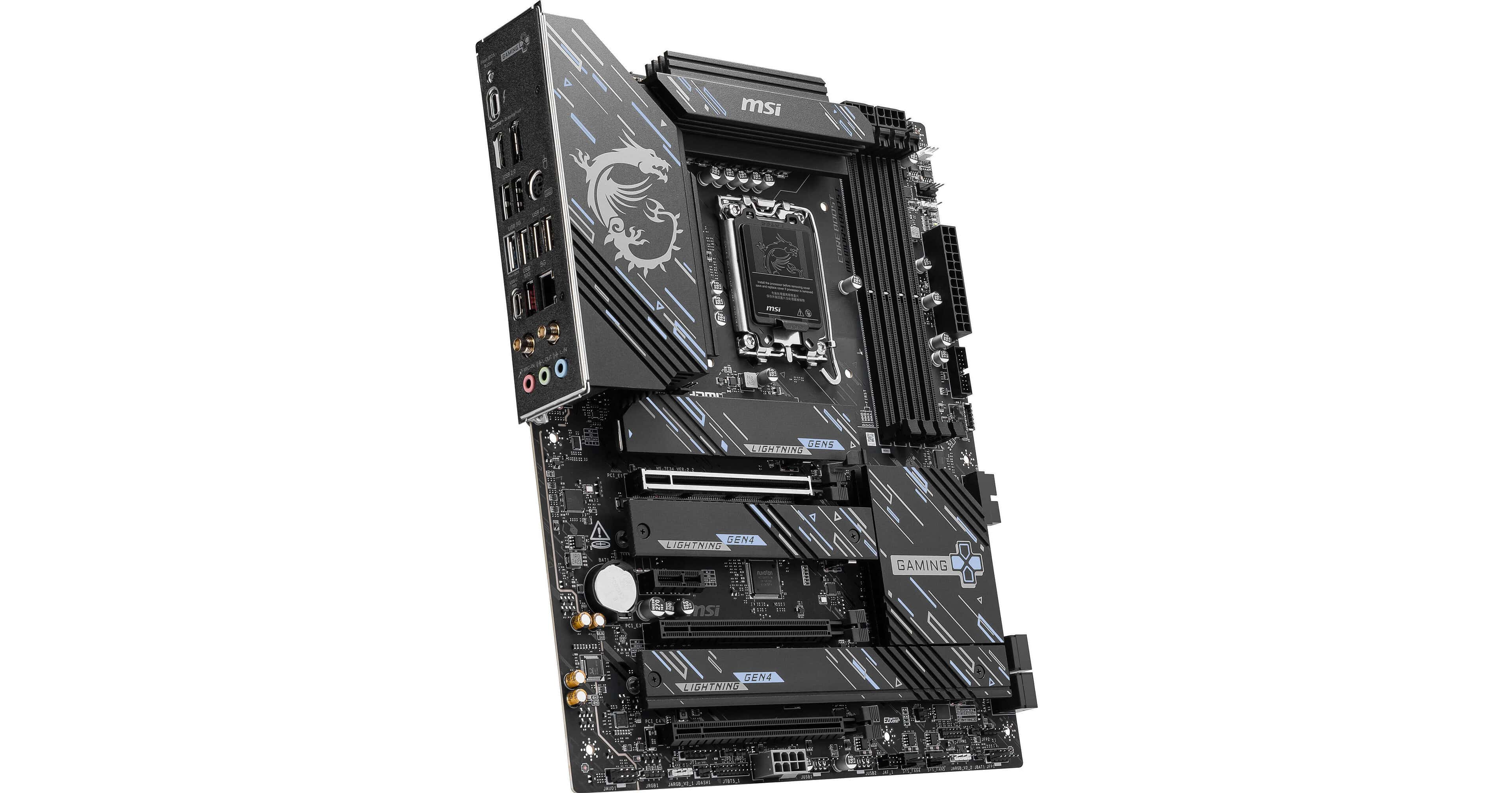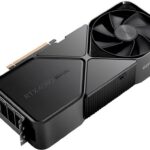Intel’s LGA-1851 socket marks a big step forward for desktop computers. This new design will work with Arrow Lake CPUs (launching October 2024) and future releases and adds 151 more pins than the current LGA-1700 socket, allowing for better performance and features. The good news is that you can use LGA 1700 coolers with LGA 1851, so that will save you some money if you’re upgrading.
The LGA-1851 socket will support faster memory and more PCIe lanes for graphics cards and storage. This means quicker data transfer and improved gaming experiences. The new socket also brings changes in size and layout, which may require new cooling solutions and motherboards.
PC builders and tech fans are excited about LGA-1851. It promises to unlock more power and speed for desktop systems. As we get closer to its release, we can expect to see more details about the CPUs and motherboards that will use this new socket.

Intel LGA-1851: A New Socket for a New Generation
Intel is shaking things up with its new LGA-1851 socket, designed to support the upcoming Arrow Lake-S desktop processors. This socket represents a significant platform upgrade, bringing more power, bandwidth, and features to Intel’s desktop lineup. But what exactly is LGA-1851, and why should you care?
More Pins, More Power
LGA stands for Land Grid Array, and the 1851 in LGA-1851 refers to the number of contact points on the socket. That’s 151 more pins than the previous LGA-1700 socket! These extra pins enable increased bandwidth and power delivery to the CPU. This is crucial for supporting the more powerful and feature-rich processors that Intel has planned.
Cooler Compatibility: A Welcome Relief
One of the best things about LGA-1851 is that it retains the same physical dimensions and mounting hole spacing as LGA-1700. This means that your existing CPU coolers will be compatible with the new socket! So if you’re planning to upgrade to an Arrow Lake-S processor, you won’t have to worry about buying a new cooler as well.
PCIe 5.0 and DDR5: The Future is Now
LGA-1851 brings support for more PCIe 5.0 lanes directly from the CPU. This means faster data transfer speeds for your graphics cards, SSDs, and other high-speed devices. And unlike LGA-1700, which supported both DDR4 and DDR5 memory, LGA-1851 exclusively supports DDR5. This signals Intel’s commitment to the newer, faster memory standard, paving the way for improved system performance.

LGA-1851 vs. LGA-1700: Key Differences
| Feature | LGA-1700 | LGA-1851 |
|---|---|---|
| Pin Count | 1700 | 1851 |
| Physical Dimensions | 37.5mm x 45mm | 37.5mm x 45mm |
| Cooler Compatibility | – | Compatible with LGA-1700 Coolers |
| PCIe 5.0 Support | Limited Lanes | Increased PCIe 5.0 Lanes |
| Memory Support | DDR4 and DDR5 | DDR5 Only |
LGA-1851 is more than just a new socket; it’s a gateway to a new generation of Intel desktop processors. With its increased bandwidth, power delivery, and support for the latest technologies, LGA-1851 lays the foundation for a more powerful and feature-rich PC experience.
Intel LGA-1851 CPU List

Here’s the list of LGA1851 processors:
| Name | Core Count | Performance Core Clock | Performance Core Boost Clock | TDP | Integrated Graphics |
|---|---|---|---|---|---|
| Intel Core Ultra 9 285K | 24 | 3.7 GHz | 5.7 GHz | 125 W | Intel Xe |
| Intel Core Ultra 7 265K | 20 | 3.9 GHz | 5.5 GHz | 125 W | Intel Xe |
| Intel Core Ultra 7 265KF | 20 | 3.9 GHz | 5.5 GHz | 125 W | None |
| Intel Core Ultra 5 245K | 14 | 4.2 GHz | 5.2 GHz | 125 W | Intel Xe |
| Intel Core Ultra 5 245KF | 14 | 4.2 GHz | 5.2 GHz | 125 W | None |
Intel LGA-1851 Motherboards List

| Name | Socket / CPU | Form Factor |
|---|---|---|
| ASRock Z890 Lightning WiFi | LGA1851 | ATX |
| ASRock Z890 LiveMixer WiFi | LGA1851 | ATX |
| ASRock Z890 Nova WiFi | LGA1851 | ATX |
| ASRock Z890 Pro RS | LGA1851 | ATX |
| ASRock Z890 Pro RS WiFi | LGA1851 | ATX |
| ASRock Z890 Pro RS WiFi White | LGA1851 | ATX |
| ASRock Z890 Pro-A | LGA1851 | ATX |
| ASRock Z890 Pro-A WiFi | LGA1851 | ATX |
| ASRock Z890 Riptide WiFi | LGA1851 | ATX |
| ASRock Z890 Steel Legend WiFi | LGA1851 | ATX |
| ASRock Z890 Taichi | LGA1851 | ATX |
| ASRock Z890 Taichi Lite | LGA1851 | ATX |
| ASRock Z890 Taichi OCF | LGA1851 | ATX |
| ASRock Z890I Nova WiFi | LGA1851 | Mini ITX |
| ASRock Z890M Riptide WiFi | LGA1851 | Micro ATX |
| Gigabyte Z890 AERO G | LGA1851 | ATX |
| Gigabyte Z890 AI TOP | LGA1851 | EATX |
| Gigabyte Z890 AORUS ELITE WIFI7 | LGA1851 | ATX |
| Gigabyte Z890 AORUS ELITE WIFI7 ICE | LGA1851 | ATX |
| Gigabyte Z890 AORUS ELITE X ICE | LGA1851 | ATX |
| Gigabyte Z890 AORUS MASTER | LGA1851 | ATX |
| Gigabyte Z890 AORUS MASTER AI TOP | LGA1851 | EATX |
| Gigabyte Z890 AORUS PRO ICE | LGA1851 | ATX |
| Gigabyte Z890 AORUS XTREME AI TOP | LGA1851 | EATX |
| Gigabyte Z890 EAGLE WIFI7 | LGA1851 | ATX |
| Gigabyte Z890 GAMING X WIFI7 | LGA1851 | ATX |
| Gigabyte Z890 UD | LGA1851 | ATX |
| Gigabyte Z890 UD WIFI6E | LGA1851 | ATX |
| Gigabyte Z890I AORUS ULTRA | LGA1851 | Mini ITX |
| Gigabyte Z890M AORUS ELITE WIFI7 | LGA1851 | Micro ATX |
| Gigabyte Z890M AORUS ELITE WIFI7 ICE | LGA1851 | Micro ATX |
| Gigabyte Z890M GAMING X | LGA1851 | Micro ATX |
| MSI MAG Z890 TOMAHAWK WIFI | LGA1851 | ATX |
| MSI MEG Z890 ACE | LGA1851 | ATX |
| MSI MEG Z890 GODLIKE | LGA1851 | EATX |
| MSI MEG Z890 UNIFY-X | LGA1851 | ATX |
| MSI MPG Z890 CARBON WIFI | LGA1851 | ATX |
| MSI PRO Z890-A WIFI | LGA1851 | ATX |
Key Takeaways
- LGA-1851 adds 151 pins over LGA-1700 for better performance
- The new socket supports faster memory and more PCIe lanes
- It will be used with Intel’s Arrow Lake CPUs starting in 2024
Architecture and Compatibility
LGA 1851 brings key changes to Intel’s CPU socket design. It offers more pins and improved features compared to older sockets like LGA 1700.
CPU and Socket Design
LGA 1851 has 1851 pins, up from 1700 in the previous socket. It keeps the same size as LGA 1700 at 45×37.5 millimeters. This means CPU coolers made for LGA 1700 will still work with the new socket.
The new design supports Arrow Lake and Meteor Lake desktop CPUs. These chips bring big upgrades in speed and power use. They also add more PCIe lanes for faster data transfer.
Arrow Lake-S chips will have 20 PCIe 5.0 lanes. This includes 16 for graphics cards and 4 for fast SSDs. There are also 4 extra PCIe 4.0 lanes for another SSD.
Platform and Chipset Innovations
The 800-series chipsets, like Z890, will work with LGA 1851. These chipsets add new features to support the latest CPUs.
One big change is better PCIe support. The new platform can split PCIe lanes into three parts (8x, 4x, 4x) instead of just two. This allows for more flexible setups with graphics cards and SSDs.
LGA 1851 also keeps using DDR5 memory. This fast RAM helps get the most out of new CPUs. The platform aims to balance speed and power use for better overall performance.
FAQs
Can I Use An LGA-1700 Cooler On A LGA-1851 Motherboard?
Yes. Intel’s LGA1851 socket offers the same mounting points and dimensions as the previous LGA1700 generation so you can use coolers that were previously compatible with LGA 1700 on the new LGA 1851 socket. There would be no need to get an adapter or conversion plate as the physical dimensions are the same.







